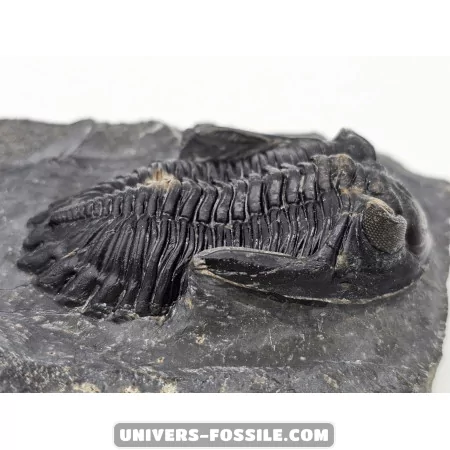Hollardops Trilobites - Learn About the Fascinating Extinct Species

Hollardops Trilobites
Hollardops trilobites are an extinct species of trilobites, a group of marine arthropods that thrived millions of years ago. These fascinating creatures were among the prominent inhabitants of the Paleozoic oceans, offering paleontologists valuable insights into ancient marine life.
Anatomy of Hollardops Trilobites
Hollardops trilobites were characterized by their segmented body into three distinct lobes, hence their name. Here are some of the most remarkable anatomical features of these creatures:
- Segmented body: Like all trilobites, Hollardops had a body divided into three longitudinal parts - the cephalon (head), the thorax (body), and the pygidium (tail).
- Calcified exoskeleton: The outer shell of trilobites was formed of chitin and calcite, providing rigid protection against predators.
- Compound eyes: Hollardops trilobites possessed large compound eyes, consisting of many small hexagons, giving them a panoramic view of their environment.
- Antennae: Although few fossilized specimens have retained their antennae, it is likely that Hollardops had them to detect environmental stimuli.
- Segmented legs: Trilobites used their segmented legs to move along the seafloor, sifting through the sediment in search of food.
Hollardops Trilobites:
Hollardops trilobites were ancient marine arthropods that roamed the seas during the Middle to Upper Devonian period, thriving approximately 390 to 370 million years ago. These fascinating creatures played a vital role in the prehistoric ecosystem as both predators and prey.
Habitat:
Hollardops fossils have been unearthed in geological formations worldwide, from Morocco to Germany, shedding light on their distribution and evolution. The Devonian seas were rich in diverse marine life, and trilobites, including Hollardops, played a significant part in this ancient underwater world.
Lifestyle:
These benthic organisms scoured the substrate for food, using their segmented appendages to sift through organic detritus and small organisms. Hollardops trilobites were not only skilled hunters but also targets for predators like cephalopod mollusks and predatory fish.
Extinction:
As with all trilobite species, the reign of Hollardops eventually came to an end. Despite their robust exoskeletons providing some defense, signs of predation and disease can be observed on many specimens, showcasing their place in the ancient food chain.
Welcome to the World of Hollardops Trilobites!
Discover the intriguing world of Hollardops trilobites, an extinct species that roamed the ancient oceans millions of years ago.
